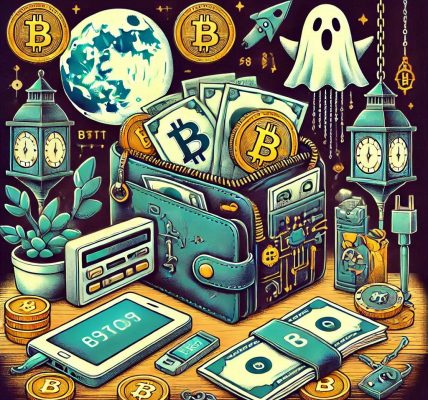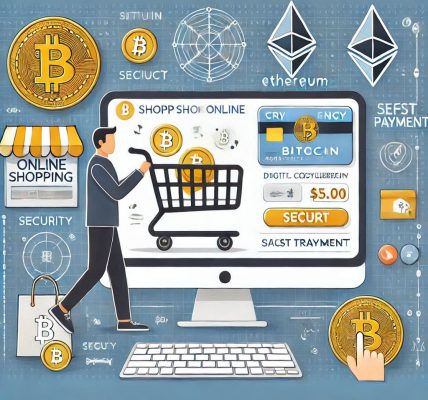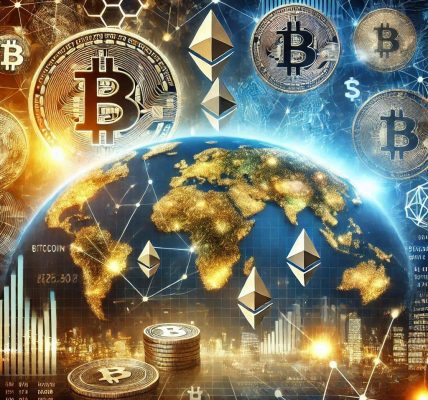The world of finance has seen significant innovations in recent years, and one of the most exciting developments is the rise of tokenized assets. In a digital-first world, where everything is becoming more accessible and efficient, tokenization is changing the way we think about ownership and investment. But what exactly are tokenized assets, and how do they work? In this blog, we’ll explore the concept of tokenized assets, how they function, and why they might be the future of investments.
1. Understanding Tokenized Assets
Tokenized assets are real-world assets that have been converted into digital tokens, typically on a blockchain, which represents ownership or a stake in the asset. These assets could be anything from real estate, stocks, art, commodities, or even rare collectibles. Tokenization involves creating a digital token that corresponds to a portion of the underlying asset, allowing it to be bought, sold, and traded in a way that’s much more efficient and accessible.
At its core, tokenization is about simplifying the ownership and transfer of assets through blockchain technology. Each token is a digital representation of value, and its ownership is recorded on the blockchain, making it immutable and secure.
2. How Do Tokenized Assets Work?
Tokenized assets work by creating a blockchain-based representation of the asset. Let’s break down how this process works:
- Step 1: Asset Identification – The first step is identifying the asset you want to tokenize. This could be a physical asset (like real estate) or an intangible asset (like shares in a company).
- Step 2: Token Creation – Once the asset is identified, a smart contract is created on a blockchain (such as Ethereum) to generate a digital token. This token will represent a fraction of the ownership or value of the underlying asset. For example, one token could represent 1% of a piece of real estate or 1 share of a company.
- Step 3: Ownership Recording – The ownership of these tokens is securely recorded on the blockchain, which acts as a decentralized ledger. This ledger is publicly available and transparent, ensuring that no one can alter or falsify the ownership records.
- Step 4: Trading and Transactions – Once tokenized, these assets can be traded or transferred just like cryptocurrencies. Investors can buy, sell, or transfer the tokens on various blockchain platforms or exchanges, enabling easier access to these assets.
- Step 5: Dividends and Returns – In the case of tokenized equity, such as tokenized stocks, holders can receive dividends or returns from the underlying asset. For tokenized real estate, rental income could be distributed among token holders.
3. Benefits of Tokenized Assets
Tokenized assets offer several advantages that make them attractive to investors and businesses alike. Here are some of the key benefits:
- Liquidity – Tokenizing assets makes it easier to buy, sell, and trade them. Many assets, such as real estate or fine art, are traditionally illiquid, meaning they’re difficult to sell quickly. With tokenization, ownership can be divided into smaller portions, making it possible to trade fractions of these assets, increasing liquidity.
- Fractional Ownership – Tokenization allows for fractional ownership, enabling investors to own a portion of a high-value asset without needing the capital to purchase the entire asset. For example, investors can own a share of a multi-million-dollar building or expensive artwork. This opens up investment opportunities to a much broader audience.
- Transparency and Security – Blockchain technology ensures that the ownership and transaction history of tokenized assets are secure and transparent. The blockchain acts as a decentralized ledger that cannot be altered or tampered with, providing trust and security to investors.
- Lower Costs – Tokenization reduces the need for intermediaries such as brokers, lawyers, and banks, which can significantly lower transaction costs. By cutting out middlemen, transactions become faster and more cost-effective, making the investment process more efficient.
- Global Access – Tokenized assets are accessible to investors around the world. As long as you have access to a blockchain platform, you can invest in tokenized assets, regardless of your location. This removes geographical barriers and creates a more inclusive investment landscape.
4. Examples of Tokenized Assets
Tokenized assets can be applied to a wide variety of investment opportunities. Here are some examples:
- Real Estate – Tokenizing real estate allows investors to buy fractions of properties, making it easier for them to diversify their investment portfolios. For instance, a commercial property could be tokenized into thousands of small tokens, enabling investors to buy a share of the property rather than the whole building.
- Stocks and Equity – Companies can issue tokenized stocks, which represent shares of the company. These stocks can be traded just like traditional stocks, but the transactions occur on the blockchain, increasing efficiency and transparency.
- Art and Collectibles – High-value art and collectibles can be tokenized, enabling fractional ownership. This allows investors to own a portion of a masterpiece without needing the millions of dollars required to purchase the full piece.
- Commodities – Tokenization is also being applied to commodities such as gold and oil. Tokenized gold, for example, could allow investors to buy and sell small portions of gold with ease, making it more accessible than purchasing physical gold.
5. The Future of Tokenized Assets
The potential of tokenized assets is vast, and as blockchain technology continues to mature, we can expect even more industries to embrace tokenization. From real estate and fine art to equities and commodities, tokenization is democratizing access to investment opportunities and creating a more efficient market.
However, as with any new technology, there are challenges to overcome, such as regulatory hurdles and legal frameworks surrounding tokenized assets. The regulatory landscape will need to catch up with the rise of tokenization to ensure that investors are protected and that these assets can be traded legally and securely across jurisdictions.
6. How to Get Involved in Tokenized Assets
If you’re interested in getting involved with tokenized assets, here’s how you can start:
- Research Platforms – Look for reputable platforms or exchanges that offer tokenized asset investment opportunities. Some popular platforms include RealT, OpenLaw, and tZERO.
- Start Small – If you’re new to tokenized assets, it’s a good idea to start with small investments in assets that are familiar to you, such as tokenized real estate or commodities.
- Check Regulatory Compliance – Always ensure that the platform you’re using complies with regulations in your country to protect your investments.
7. Conclusion: The Future of Investment
Tokenized assets are opening new doors for investors, offering access to high-value assets with lower costs, increased liquidity, and greater transparency. With blockchain technology driving this transformation, tokenization is set to revolutionize the way we invest. As the market matures and regulatory frameworks evolve, tokenized assets will continue to play an increasingly significant role in the global economy.




